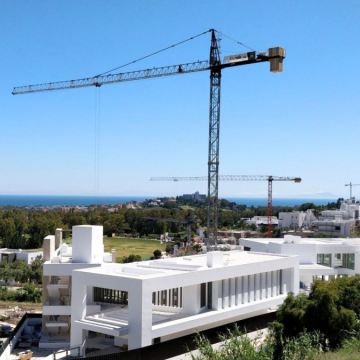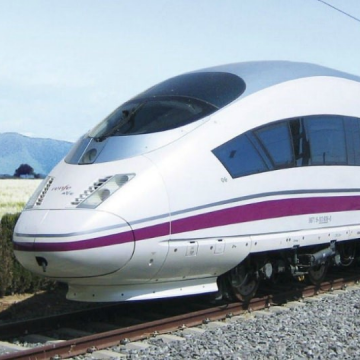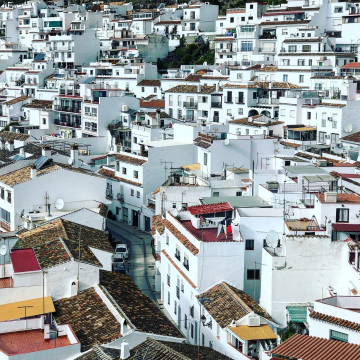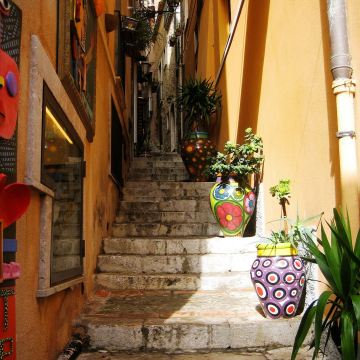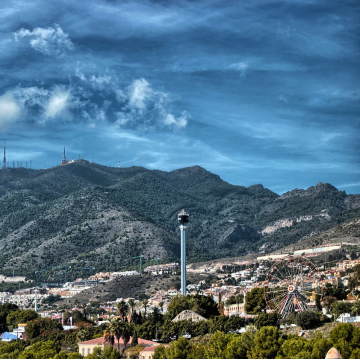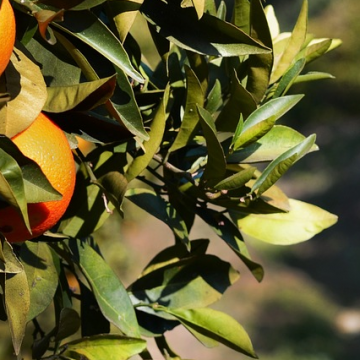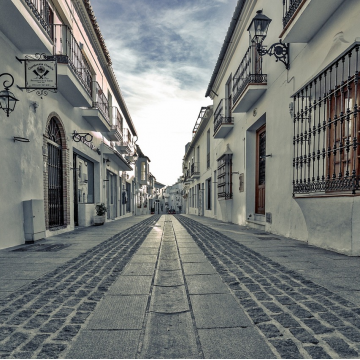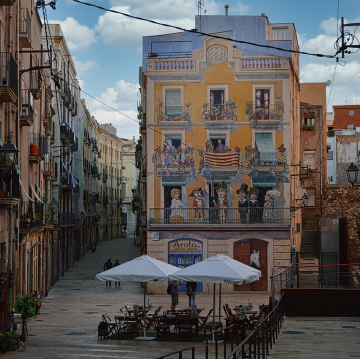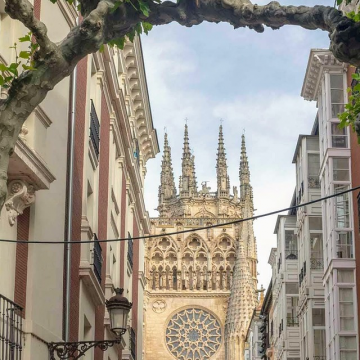Almeria
Almería is a city and municipality of Spain, located in Andalusia. It is the capital of the province of the same name. It lies on south eastern Iberian coast on the Mediterranean Sea. Caliph Abd al-Rahman III founded the city in 955. The city grew wealthy during the Islamic era, becoming a world city throughout the 11th and 12th centuries. It enjoyed an active port that traded silk, oil and raisins.
Economy - Intensive agriculture has been the most important economic sector of Almería for the last 50 years. Nowadays, greenhouse's production, handling and commercialisation of vegetables, and the supply industry of the sector, represent almost 40% of Almería's GDP. Directly, agricultural production accounts for 18.2% of the provincial GDP. In Andalusia, the average contribution is 6.6% and in Spain it is only 2.9%.
This situation is the result of a great dynamic model, which can continually incorporate new technologies: using soil sanding, plastic covers, drip irrigation systems, hybrid seeds, soil-less cultivation, irrigation programs, new greenhouse structures, and so on. They all allowed to improve production and increase commercialisation calendars, assuring the profitability and quality of the crops and the competitiveness of the markets. Moreover, Almería's economy has an important exporting vocation: 75% of production was sold abroad in 2018, with a value of 2.400 million euros.
This development is explained by familiar investment, as subsidies have been limited or non-existent. In this sense, the horticultural sector receives the least European aids from the Common Agricultural Policy: 1.9% of total income. This figure is much lower than that received by other sectors such as olive groves (33%) or cereals (53%).
From a social point of view, Almería and Granada are an example of familiar agriculture, with small farms and little concentration of land. This social nature generates high equity in the level of income and welfare, that is, social cohesion is produced, and inequality is reduced. Concretely, Almería is made up of 12.500 farms with an extension of 2,5 hectares and a 30% of familiar labour. It is also important the high education levels of the farmers, who shows an innovative and receptive character when it comes to continuing learning: 81,2% have some type of official academic training.
At the same time, a commercial system based on social economy enterprises has been developed, e.g., as cooperative societies. These companies represent the 62% of production and sales. They assure the access to the market in optimal conditions, because they increase its position inside the agri-food supply chain, facilitate financing, technical advice, and incorporation of technology. Moreover, local ties increase environmental sustainability.
Geography - Due to its arid landscape, numerous Spaghetti Westerns were filmed in Almería and some of the sets are still remain as a tourist attraction. These sets are located in the desert of Tabernas. The town and region were also used by David Lean in Lawrence of Arabia (1962), John Milius in The Wind and the Lion (1975) and others.
One of Almería's most famous natural spots is the Cabo de Gata-Níjar Natural Park. This park is of volcanic origin, and is the largest and most ecologically significant marine-terrestrial space in the European Western Mediterranean Sea. The Cabo de Gata-Níjar Natural Park runs through the municipal areas of Níjar, Almerimar and Carboneras. Its villages, previously dedicated to fishing, have become tourism spots. The beaches of Cabo de Gata-Níjar Natural Park are also an attraction.
Almería has one islet that it administers as a part of its territory in the Alboran Sea, Alboran Island. The island has a small cemetery, a harbor, and a lighthouse, built in the 19th century.
Main Sights
The Alcazaba, a medieval fortress that was begun in the 10th century but destroyed by an earthquake in 1522. It includes a triple line of walls, a majestic keep and large gardens. It commands a city quarter with buildings dressed in pastel colours, of Muslim-age aspect. It is the second largest among the Muslim fortresses of Andalusia, after the Alhambra.
Almería air raid shelters, underground galleries for civilian protection during the Spanish Civil War, currently the longest in Europe open for tourists.
The Cathedral has a fortress-like appearance due to its towers, merlons and protected paths, created to defend it from Mediterranean pirates. Originally designated as a mosque, it was later converted into a Christian church, before being destroyed in the 1522 earthquake. In the 16th century it was rebuilt in the Renaissance style, whilst keeping some of its defensive features
Renaissance church of Santiago, built in 1533, with tower and portal decorated with reliefs
Chanca, a group of houses carved into rocks
Castle of San Cristobal, now in ruins. It is connected to the Alcazaba by a line of walls.
Museum of Almería. Includes findings from Prehistoric, Iberic, Roman, Greek ages and Muslim objects, mostly from the Alcazaba.
Paseo de Coches, a modern seaside promenade with gardens and palms.
Cable Inglés (English Pier), 1904 iron railway pier built to transfer iron ore, copper, and silver produced by British- and French-run mines in Granada from trains to waiting cargo ships.
Climate - With a yearly precipitation of just 200 mm (7.9 in) and with only 26 days of precipitation and an annual temperature of 19.1 °C (66.4 °F), Almería has a hot semi-arid climate bordering on a hot desert climate according to the Köppen climate classification, and it is the closest city in Europe to a hot desert climate, reaching it closely in the south-eastern outskirts of the city until the Cabo de Gata-Níjar Natural Park located east of the city. It is one of the driest zones on both shores of the Mediterranean coast.
Almería also experiences the warmest winters of any city on the European continent with a population over 100,000, having hot and dry summers, with precipitation rare between June and August (July and August have in average 0.3 rainy days). Almería enjoys about 3,000 hours of sunshine with over 320 sunny days per year on average (6 hours of sunshine in January and 12 in July) so it is one of the sunniest cities in Europe.
Almería is unique, for a city in Continental Europe, for not having any registered temperature under the freezing mark in its recorded weather history. The coldest temperature recorded was 0.1 °C (32.2 °F) at the airport in January 2005. Before that, the previous record was 0.2 °C (32.4 °F) on 9 February 1935
During the winter, daily maximum temperatures tend to stay around 17–18 °C (63–64 °F). At night, the minimum temperature is usually around 8–10 °C (47–50 °F). This makes Almería the city with the second warmest winters in Spain and Europe, just after Cádiz.
During the warmest months - July and August, the sky is usually cloudless and almost no rainfall occurs. The typical daily temperatures are around 30 °C (86 °F) during the day while the minimum temperatures stay around 22 °C (72 °F) during July and August. As is the case for most of coastal Iberia, heatwaves in Almería are much less common than in the interior because of its coastal location; The hottest temperature recorded was 41.6 °C (106.9 °F) in July 2019

